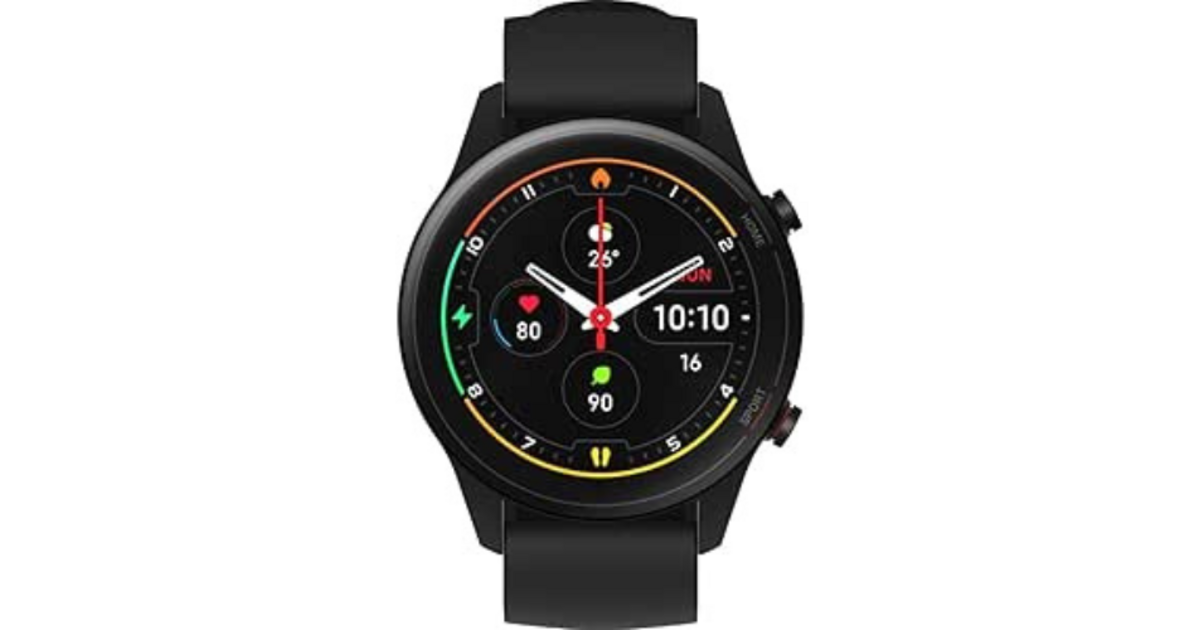Construction and sustainability: Who holds up?
Manufacturing quality
- Xiaomi : Clean, well assembled, without unnecessary frills
- realm : A notch below, plastic that is a bit cheap
- OnePlus : Higher end finish, “real watch” look
Resistance to tests
The Xiaomi won the falling test on tiles without flinching, while the Realme Watch 2 Pro has cracked at the first impact against a corner of the table. Special mention for the OnePlus which survived a sandbath at the beach without consequences.
In terms of daily comfort, the Xiaomi is forgotten on the wrist thanks to its lightness, while the heavier oneplus can hinder fine wrists. The realme bracelet is more rigid and can become uncomfortable during sleep.
See the Xiaomi Redmi Watch 3 and opinions on Amazon
Screen and interface: daily user experience
Display quality
The OnePlus Watch clearly dominates with its AMOLED screen with striking contrast, readable even in full sun. The Xiaomi follows closely, while the realme displays average performance.
The tactile reactivity follows the same classification: OnePlus in mind, Xiaomi just behind, and Realme which drags with sometimes need to double to that the order is taken into account.
Companion interface and applications
- Xiaomi Wear (Mi Fitness) : Clear, intuitive, well thought out
- Realme Link : Jumble, little ergonomic
- OnePlus Health : Correct but lack of depth
Connectivity problems mainly affect realme, which is frequently disconnected. The Xiaomi and OnePlus watches offer a stable and reliable connection.
See Realme Watch 2 Pro and Amazon reviews
Sports performance and health monitoring
Activity tracking
Xiaomi stands out with a reliable GPS and a diversity of recognized sports. OnePlus offers good follow -up for moderate activities but struggling in high intensity, while Realme disappoints with unclear data in the footsteps and calories.
Precision of measures
Xiaomi sensors offer the most coherent heart and SPO2 frequency measures. OnePlus follows closely, but Realme presents data too random to be really useful.
Sleep monitoring
- Xiaomi : Fairly reliable, consistent data
- realm : Too optimistic, never detects bad nights
- OnePlus : Good follow -up but confused data display
Autonomy and battery: the nerve of war
The Xiaomi crushes competition with 10 to 12 days of autonomy in real use. Realm is about 7 days, while the OnePlus caps at 5 days in moderate use.
Over time, the OnePlus battery shows signs of weakness after a year of use (-20% autonomy), while the Xiaomi is getting better.
Distinctive features and limits
Strengths and weaknesses
- Xiaomi : Excellent for hiking with its precise GPS and enduring battery
- OnePlus : Better for calls (clear speaker, correct microphone) and music storage
- realm : No distinctive strong point …
Common limitations
None of the three offers NFC really usable in Europe on low-cost models, which limits the possibilities of contactless payment.
Advanced health analyzes like the ECG are either absent or gadget on these affordable models.
See the OnePlus Watch 2 and the opinions on Amazon
Final verdict: the best value for money
If I had to keep one one, it would be without hesitation the Xiaomi Mi Watch. Robust, precise, with impressive and almost bug autonomy, it simply offers the best value for money on the market.
The OnePlus Watch deserves its place if you are looking for a more premium design and call features, but its limited autonomy penalizes it.
As for the Realme Watch 2 Pro, it drags far behind with its reliability problems, its wobbly interface and its lack of precision.
Desired improvements for the future
- NFC Functional in Europe
- Best integration with third -party applications (Spotify, Google Fit)
- Screens always lit more efficient without sacrificing the autonomy
- More personalization options
This article reflects my personal experience after several years of daily use. The models tested are the bestsellers of each brand, not the obscure versions that no one buys.
